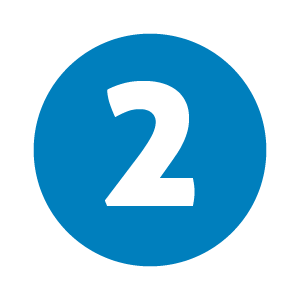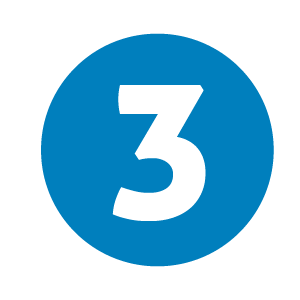“I know it’s not what I *really want to do,* but….” How often have you heard it in your coaching – and said it yourself? Here’s what drives that system, and surprising ways to help clients shift out of it.
One of the reasons Six Seconds emotional intelligence coaching is so effective is our focus on the way emotions drive our reactions – and how emotions are a pathway out. Before we dive into the tools, if you’re new to Six Seconds, two useful terms:
1. Recognize Patterns
is one of the competencies in the Six Seconds model of emotional intelligence, and the world’s best emotional intelligence test: SEI (it’s the best because it blends scientific rigor with an actionable framework, global perspective, and a complete range of tools).
Recognize Patterns means noticing our own recurring reactions – such as: “When I feel sad, I eat,” or, “When I think people are depending on me, I say yes even when I think I should not.” Our brains our pattern-making, pattern-following systems – the video to the right shows why that matters and how to get out of patterns.
2. Apply Consequential Thinking
It’s about weighing costs and benefits. One of our premises is that all patterns (all choices, all reactions) have both costs and benefits (to us and/or to others). Costs are downsides, risks, or adverse consequences. Benefits are upsides, advantages, or desirable consequences. Crucial to remember that in emotional intelligence, feelings are a important factor in this analysis. EG, if you changed the pattern, how might you feel?
This article is from the 🌱 Emotional Intelligence Coach Newsletter
Click here & choose the newsletters that will help you practice and grow emotional intelligence
How to Get Unstuck: 3 tips for change
One process and two questions I’ve found particularly useful in recognizing and changing patterns:

Working backward from the outcomes
In contracting, all coaches (I hope) are encouraging clients to consider their goals. EQ Coaches take the contracting process in coaching further and faster by leveraging the “success factors” from the SEI – effectiveness, relationships, wellbeing and quality of life. Whether you use the SEI or not, you can try out this approach.
Looking at the success factors (aka “Outcomes”), I usually ask: “What are you noticing or curious about?”
Frequently, they identify one of the 4 success factors is lower than they want it to be, and say:
“I know this is important, but I’m not doing it.”
Aha! I often ask them if they’d like to tell me more about that… and the session moves quickly into rich areas for growth. I don’t usually define “Recognizing Patterns,” but instead just ask, “Does that come up often?” and if yes, I name it as a pattern.

Where did you learn this pattern?
This question opens up a whole terrain around cultural identity, role models, and lived experience. Sometimes clients struggle with a dichotomy between respecting and loving the sources of those patterns – and the patterns not serving them.
Aha! By tuning into this question, we can then discuss if those sources or influences are really useful now. This often requires care to not demean or diminish the sources while also considering a change. For example, a client recently told me she learned her pattern of self-sacrifice from her grandma, who was a strong and important figure. I said, “Maybe that’s a pattern that was essential for her at that time and place,” and invited the client to consider: “In what ways are you in a different time and place that might call for a change in this pattern?”

What’s the pattern giving you?
Left to themselves, folks seem to focus mostly on the downsides of these problematic patterns. Client: “I am not investing enough in relationships and that’s reducing my influence at work. I know it, but I keep doing it anyway.”
I invite the client to tell me more by sharing an example. Then recap the pattern (using the “When _(stimulus)_, I _(typical reaction)_” template, then extend;
Me: “What I think I heard you say is: When you get stressed, you retreat from others – does that sound right?” After the client confirms, they usually reiterate what they don’t like about that, and I ask: “What are some of the benefits of that pattern? I mean – you must be getting something from retreating – even if it’s just a tiny or short-term benefit?”
The answer is almost always about soothing distress, or being more comfortable.
Aha! Once we have identified the benefits, we can then talk about other ways of getting the desired benefits – with less costs.
I encourage you to try this out for yourself first – take yourself through these questions, and then consider how you might adapt them for your own use with clients. I’d love to hear what you discover. Please share a comment below!
And, if you have questions you’d like me to explore in a future 🌱 EQ Coaching newsletter and/or video, please post in the comments, or feel free to reach out to me via our contact form.
… and don’t forget to Click here to subscribe to the EQ Coach Newsletter.
Whether you’re a professional coach, or contemplating earning certification as a professional emotional intelligence coach*, or you’re someone who uses coaching techniques to support others: of course these questions apply to us first.
* Did you know? In addition to top-level accreditation from the International Coaching Federation, the EQ Coach Certification is one of a handful of coaching certifications in North America that also provides master’s level credit? You’ll earn almost ⅓ of your MBA or MA in this program.
For more on EQ and Coaching 🌱, I recommend:
Coaching People in Challenges
- Coaching Through the Emotional Recession: Three Practical Tips for Trauma-Informed Coaching - May 1, 2024
- Knowing Isn’t Coaching: Three Emotional Intelligence Tools for Professional Coaches - April 3, 2024
- Coaching Down the Escalator: 3 Emotional Intelligence Tips forCoaches to Reduce Volatility & De-escalate Conflict in a Polarized World - March 6, 2024
